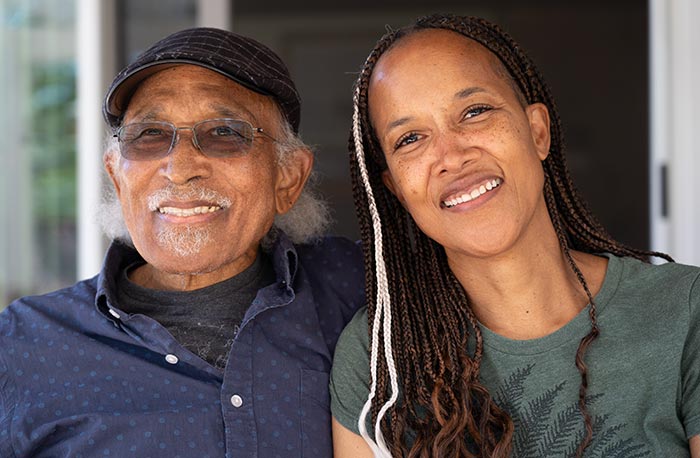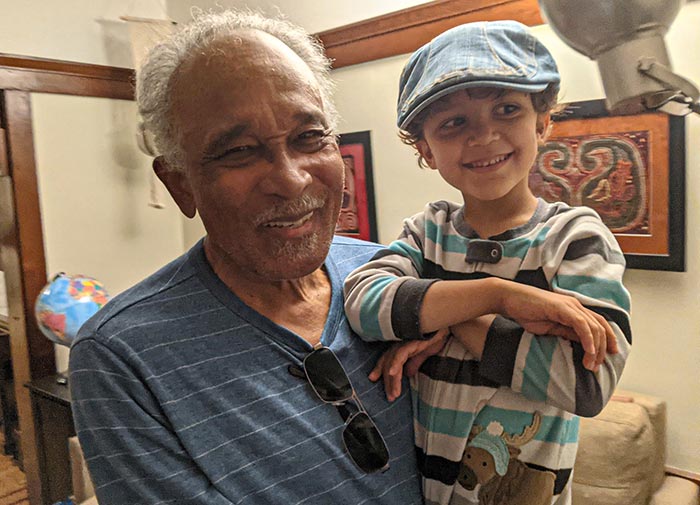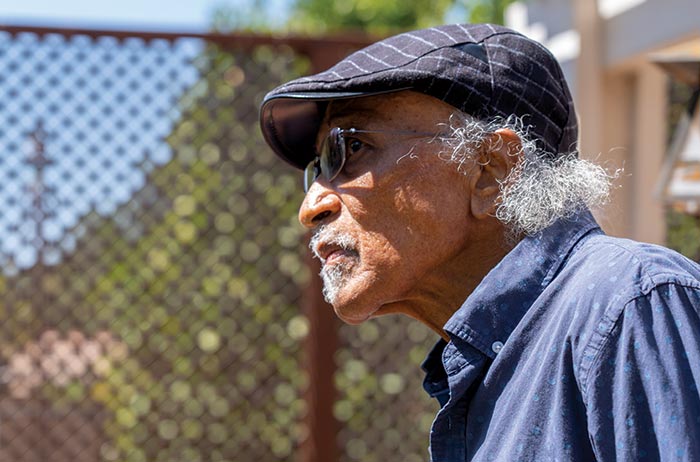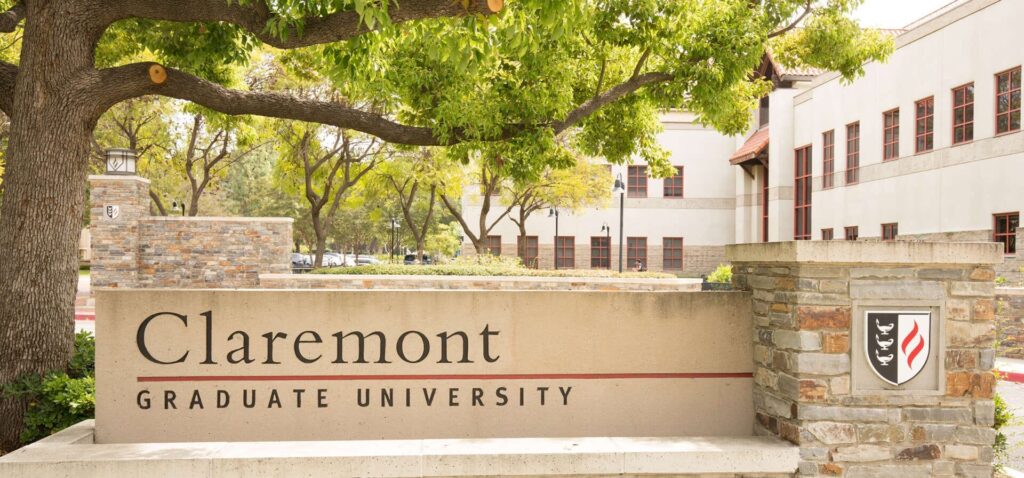Awaiting the call: family hopes to find blood stem cell donor

Lou Berrio and his daughter Itzel Berrio Hayward. Courier photo/Andrew Alonzo
by Andrew Alonzo | aalonzo@claremont-courier.com
Retired U.S. Navy veteran and longtime Claremont resident Lou Berrio enjoys life’s simple blessings. At home Wednesday, Berrio, 81, gazed at a photograph of his grandson Teo wearing his grandfather’s newsboy cap. It’s these moments, and memories not yet made, that keep Berrio hopeful.
Last November, Berrio was diagnosed with acute myeloid leukemia, a type of cancer that tricks one’s bone marrow into making large amounts of abnormal blood cells.
The diagnosis was a shock to his family.
Soon after, he was put on the NMDP Registry, formerly known as National Marrow Donor Program and Be The Match, the global nonprofit leader in blood stem cell and bone marrow transplants that manages the nation’s registry of adult volunteer donors.
“We learned that the only way to cure this disease is through a blood stem cell donor and so we immediately did everything that we could to figure out how to get him somebody, and actually, he found a match, a perfect match pretty quickly,” his daughter Itzel Berrio Hayward said.
But the donor pulled out of the process unexpectedly.
“It was so early during my treatment that I was surprised that there was a donor available right away,” Berrio said. “I was still in sort of denial of the seriousness of my disease. So, although I was disappointed, I was not devastated. It almost didn’t surprise me actually until months later when I’m waiting and I don’t get anybody, I realize how valuable that person was to me.”

Lou Berrio with his grandson Teo in 2019. Photo/courtesy of Itzel Berrio Hayward
There are more than 9 million donors on the national NMDP Registry. Just 8% identify as Black, 9% Asian, 9% multiracial, 13% Hispanic, with the overwhelming majority of 55% coming from white donors. Ethnicity and race play a significant role in matching donors with patients.
“What we’re trying to do is to find people who match the patients in terms of their genetic tissue type,” NMDP spokesperson Erica Sevilla said. “That’s often going to be reflective of somebody who shares a similar heritage. For example, Itzel’s father is Panamanian and so he is most likely to find a match with somebody who has origins, family, ancestry from the Central America area, Panamanian area, or from the Black community.”
Less than one in three Black patients find a fully matched donor on the registry, while white patients’ success rate is about 79%.
“We have to work really hard to diversify the registry,” Sevilla said. Research by NMDP is underway so patients can be paired with a donor who is not a 100% match to their cell’s human leukocyte antigens.
“I almost understand the reluctance of the African American community to trust the medical establishment,” Berrio said. “But now that I’m on the other foot, I would like to do everything I can to change that reluctance. We need to participate in the system to help people like us in the system, that can help the next generation.”

In November 2023, Claremont resident Lou Berrio was diagnosed with acute myeloid leukemia. Today he awaits a blood stem cell donor match to save his life. Courier photo/Andrew Alonzo
Hayward has been on the NMDP Registry for decades — long before her father’s diagnosis — and is aware of its racial disparity.
“It’s been kind of on the fringes of my awareness for 30 years,” she said. “It’s been a problem, but I think now the idea that it’s touching someone so close to me, I have really dug in deeper I think than I have before.”
NMDP advocacy has become a big part of Hayward’s life. She recently dedicated the month of August, her birth month, to “posting inspirational stories of people who found their matches” on Facebook.
As Berrio awaits the call that could save his life, he’s undergoing chemotherapy treatments at City of Hope in Duarte. On Wednesday he completed the eighth of 21 treatments.
The love and support of his wife and daughter are two of the biggest reasons he hasn’t given up hope that a match may one day be found.
“It would change my life,” he said.
For those interested in bolstering the NMDP Registry, World Marrow Donor Day is this Saturday, September 21. The free and open to the public Los Angeles event takes place from 1 to 4 p.m. at BMO Stadium, 3939 S. Figueroa St., Los Angeles. Visit nmdp.org and click the link under “NMDP Unite” to learn more.
Adults unable to attend but eager to join the registry can go to nmdp.org to learn how to qualify.
Being part of the registry not only offers hope to patients, but is also a crucial step in saving someone’s life Sevilla said.
“It’s easy to be a donor,” Sevilla said. “It’s only going to take a couple of hours to donate your blood stem cells, and they’re automatically replenished after a couple of weeks. But for the patients, they are getting a brand new immune system and they’re going to have to be hospitalized anywhere from 30 to 90 days at time of transplant.
“The process and the science have evolved, and the procedure resembles more like a plasma or platelet donation for the donor. About 90% of the time, it’s a nonsurgical procedure that is similar to donating plasma or platelets,” she added. “Yes, there are some needles involved, but this is such a unique opportunity to literally be somebody’s hero.”
To learn more about Berrio’s story, visit my.bethematch.org/Lou4Life.










0 Comments